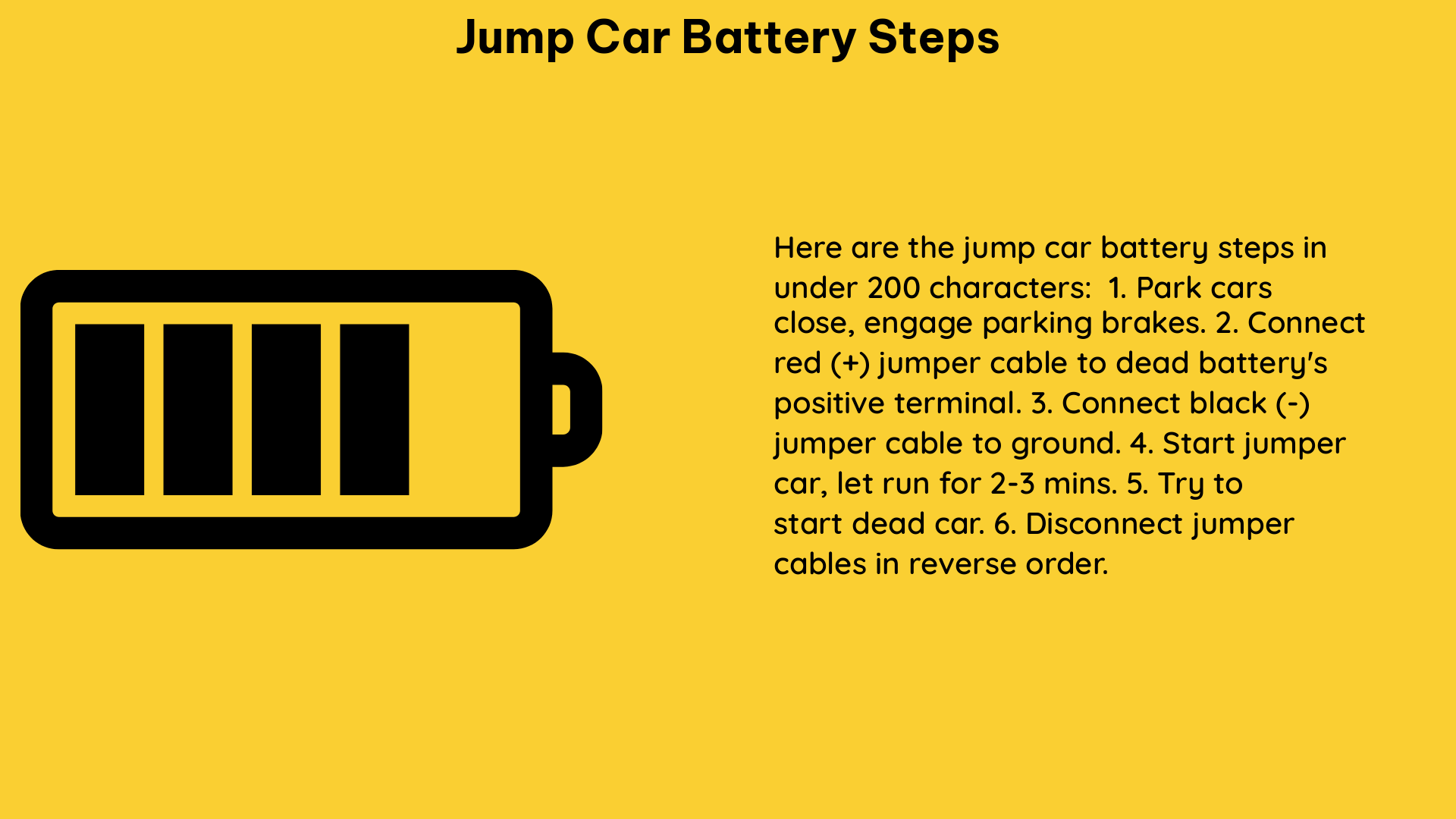Jumping a car battery is a common occurrence, but it’s crucial to follow the right steps to ensure safety and prevent damage to your vehicle. This comprehensive guide delves into the technical specifications and measurable data points you need to know to successfully jump-start a car battery.
Checking the Battery Voltage
The first step in jump-starting a car is to determine the voltage of the battery. Most modern vehicles have a 12-volt battery, but some may have a 24-volt or even a 42-volt system. Using a voltmeter, check the voltage of the dead battery and the working battery to ensure they are compatible. The working battery should have a voltage of at least 12.6 volts to provide enough power to jump-start the dead battery.
Selecting the Right Jumper Cables

Jumper cables are an essential tool for jump-starting a car, and it’s crucial to choose the right ones. The cables should have a minimum gauge of 6, with a higher gauge (lower number) providing more flexibility and better conductivity. The length of the cables is also important, as longer cables (at least 12 feet) will give you more flexibility in positioning the vehicles.
| Cable Gauge | Recommended Length |
|---|---|
| 4 Gauge | 16-20 feet |
| 6 Gauge | 12-16 feet |
| 8 Gauge | 8-12 feet |
Additionally, the jumper cables should be in good condition, with no exposed wires or signs of damage. Damaged cables can pose a safety risk and may not effectively transfer the necessary current to jump-start the dead battery.
Positioning the Vehicles
When jump-starting a car, the two vehicles should be positioned as close as possible, with the distance between them being less than two feet. This ensures that the jumper cables can reach both batteries without stretching or creating a potential hazard. Make sure the vehicles are not in contact with each other, as this could create a short circuit.
Connecting the Jumper Cables
The order in which you connect the jumper cables is crucial to prevent sparks and potential damage to the electrical systems. Follow these steps:
- Engage the parking brakes on both vehicles to prevent them from moving during the jump-starting process.
- Ensure that both vehicles are turned off and the ignition keys are removed.
- Connect the positive (+) terminal of the working battery to the positive (+) terminal of the dead battery using the red jumper cable.
- Connect the negative (-) terminal of the working battery to a metal ground on the dead vehicle, such as an unpainted bolt or the engine block, using the black jumper cable.
Starting the Vehicles
Once the jumper cables are properly connected, start the working vehicle and let it run for 2-3 minutes. This will help charge the dead battery. Then, try to start the dead vehicle while it’s still connected to the working vehicle.
If the dead vehicle doesn’t start right away, let the working vehicle run for an additional 2-3 minutes before trying again. If the dead vehicle still doesn’t start, you may need to disconnect and reconnect the jumper cables to allow the dead battery to receive a fresh charge.
Disconnecting the Jumper Cables
After the dead vehicle has started, it’s time to disconnect the jumper cables. Follow these steps in reverse order:
- Disconnect the negative (-) cable from the metal ground on the dead vehicle.
- Disconnect the negative (-) cable from the working vehicle’s battery.
- Disconnect the positive (+) cable from the working vehicle’s battery.
- Disconnect the positive (+) cable from the dead vehicle’s battery.
Be sure to keep the jumper cables away from any moving parts or hot surfaces on the vehicles to prevent damage or injury.
Safety Precautions
Safety should always be the top priority when jump-starting a car. Here are some important safety measures to keep in mind:
- Wear protective eyewear to prevent battery acid or sparks from getting in your eyes.
- Avoid touching the battery terminals with your hands, as this can create a short circuit.
- Ensure that the vehicles are not in contact with each other during the jump-starting process.
- Keep the jump-starting area well-ventilated to prevent the buildup of explosive hydrogen gas.
- Never smoke or use a cell phone near the battery, as this can ignite the gas.
By following these technical specifications and safety guidelines, you can successfully jump-start a car battery and get back on the road with confidence.
References:
– How to Jump-Start Your Car Battery – Synchrony
– 8 Steps to Jump-Starting a Car | Chapel Hill Tire
– How to Jump Start a Car (Step-by-Step Guide) – Vantrue
– What’s the Right Way to Jump Start a Battery – Midtronics
– Jump-Starting a Car Battery FactSheet – TDI.Texas.gov

The lambdageeks.com Core SME Team is a group of experienced subject matter experts from diverse scientific and technical fields including Physics, Chemistry, Technology,Electronics & Electrical Engineering, Automotive, Mechanical Engineering. Our team collaborates to create high-quality, well-researched articles on a wide range of science and technology topics for the lambdageeks.com website.
All Our Senior SME are having more than 7 Years of experience in the respective fields . They are either Working Industry Professionals or assocaited With different Universities. Refer Our Authors Page to get to know About our Core SMEs.